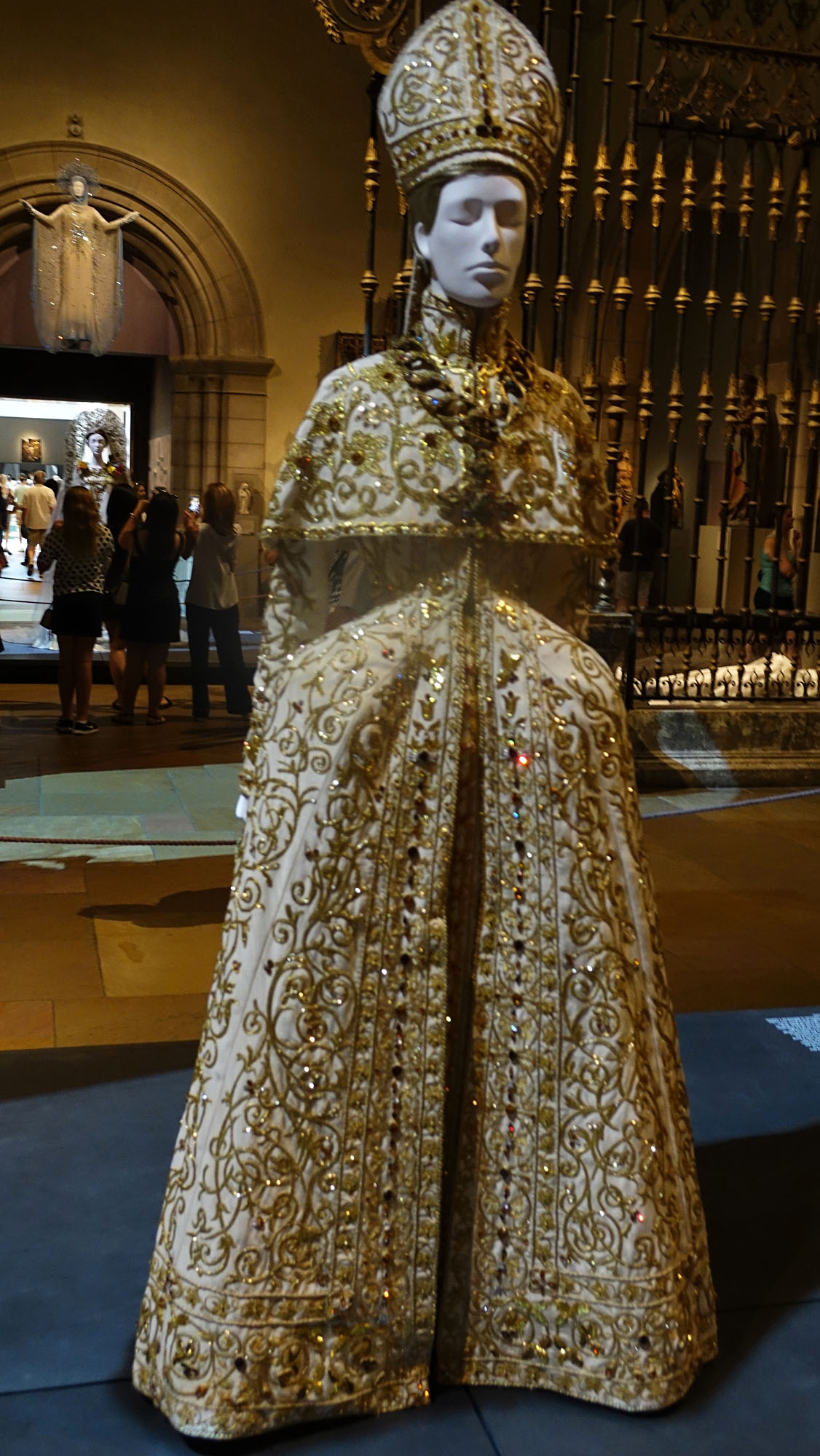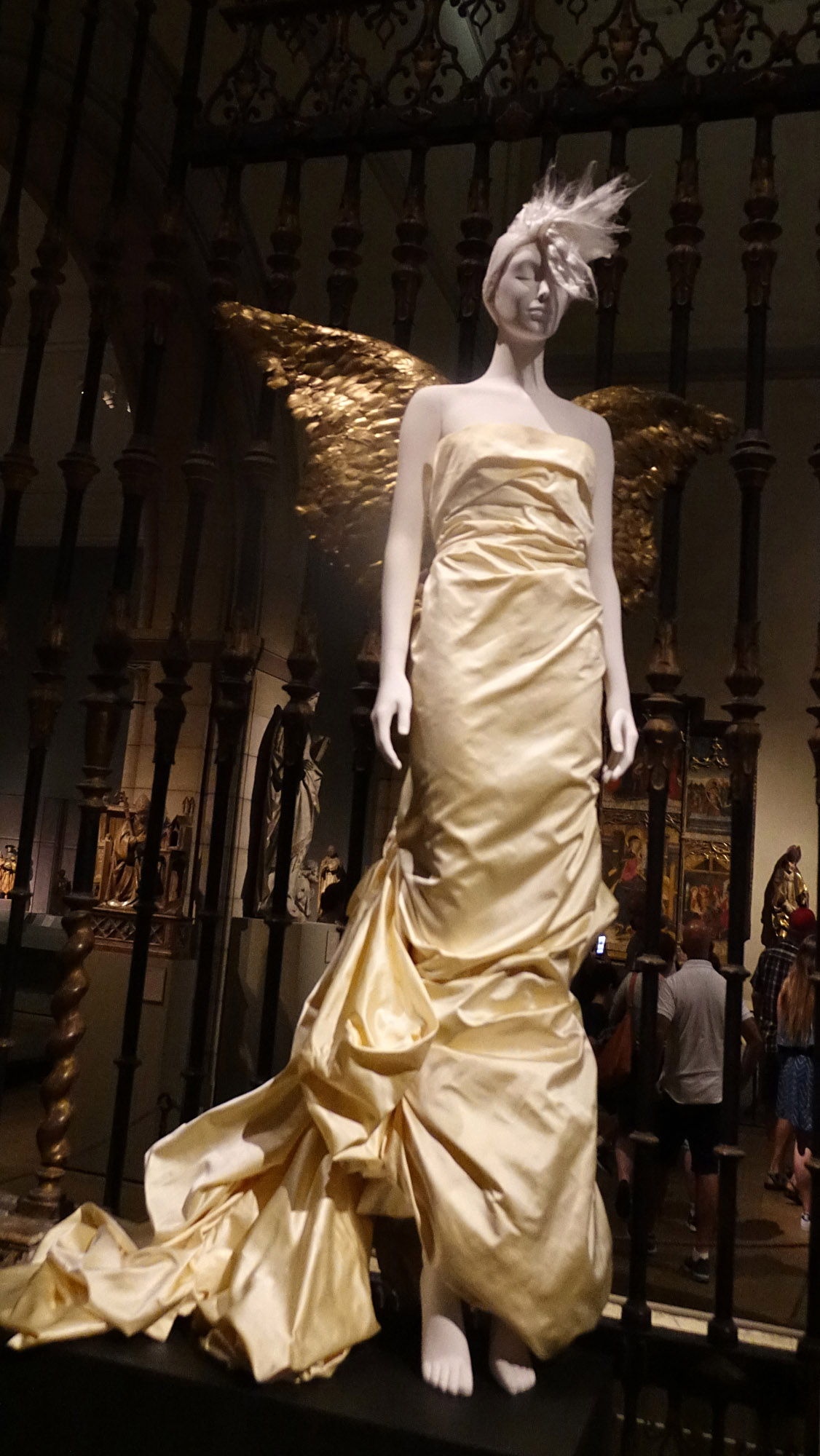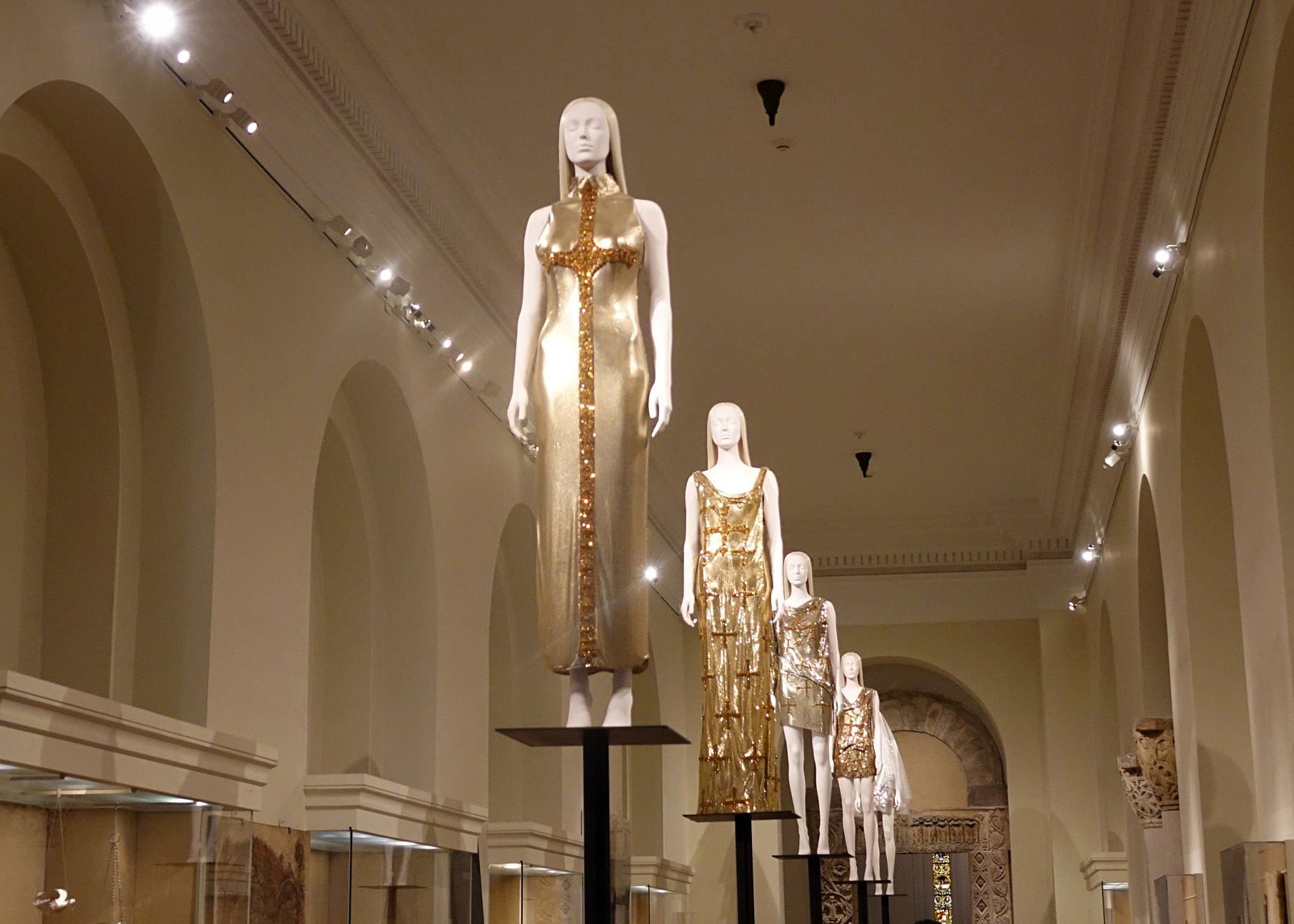“Heavenly Bodies” Exhibition at the Metropolitan Museum of Art
@PIBE
The Metropolitan Museum of Art on Fifth Avenue, New York City is already a regal monument to artistic splendour, in both its external architecture and its internal exhibits, but the “Heavenly Bodies: Fashion and the Catholic Imagination” exhibition, which runs until October 8th 2018, raises the Met to divine status.
As indicated by the exhibition’s subtitle, “Heavenly Bodies” aims to explore the interplay between fashion and “the Catholic imagination”, a term introduced by sociologist and Catholic priest Andrew Greeley to describe the common catholic characteristic of viewing material things as metaphors for the spiritual and the divine. He believed that this characteristic is what propelled the famous catholic tradition of using artistic imagery to communicate spiritual concepts. Considering the scale and worldwide impact of the Catholic church, this is an extremely ambitious task for the Met.
What greets your gracious presence in the museum is the fulfilment of this lofty ambition: The Met’s largest ever exhibition. Its epic layout is configured to represent a pilgrimage, which begins in the Byzantine and medieval art galleries, and continues in the Anna Wintour Costume Centre, before it concludes unusually at a distance in The Met Cloisters located in northern Manhattan. And illuminating the holy journey’s path through the many magnificent galleries are the realised dreams of the Catholic imagination. These come in the form of a vast collection of opulent works by fashion designers who were raised in the Catholic tradition and, even if they have swayed from Catholic doctrine, recognise the enduring influence of Catholicism on their imaginations.
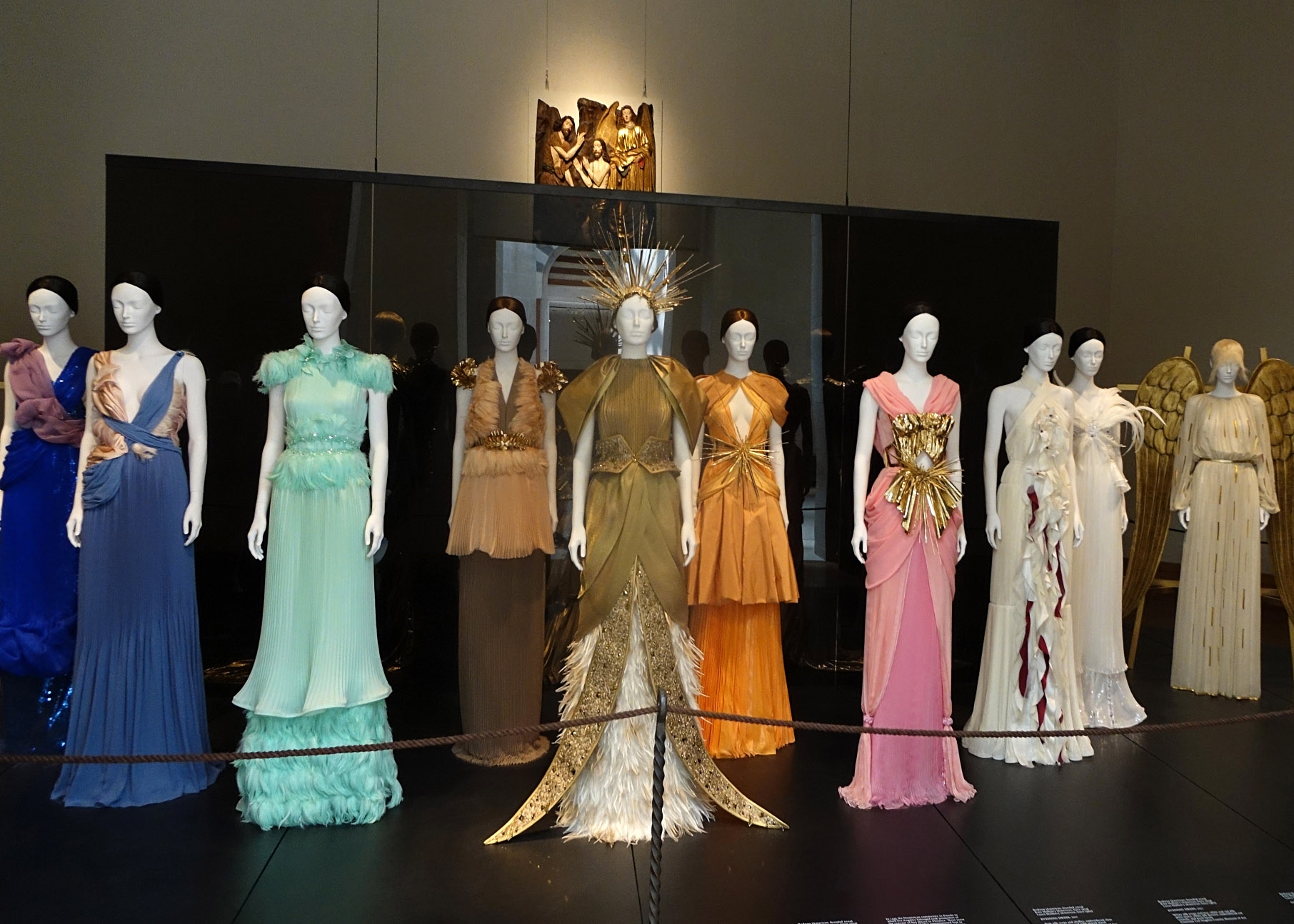
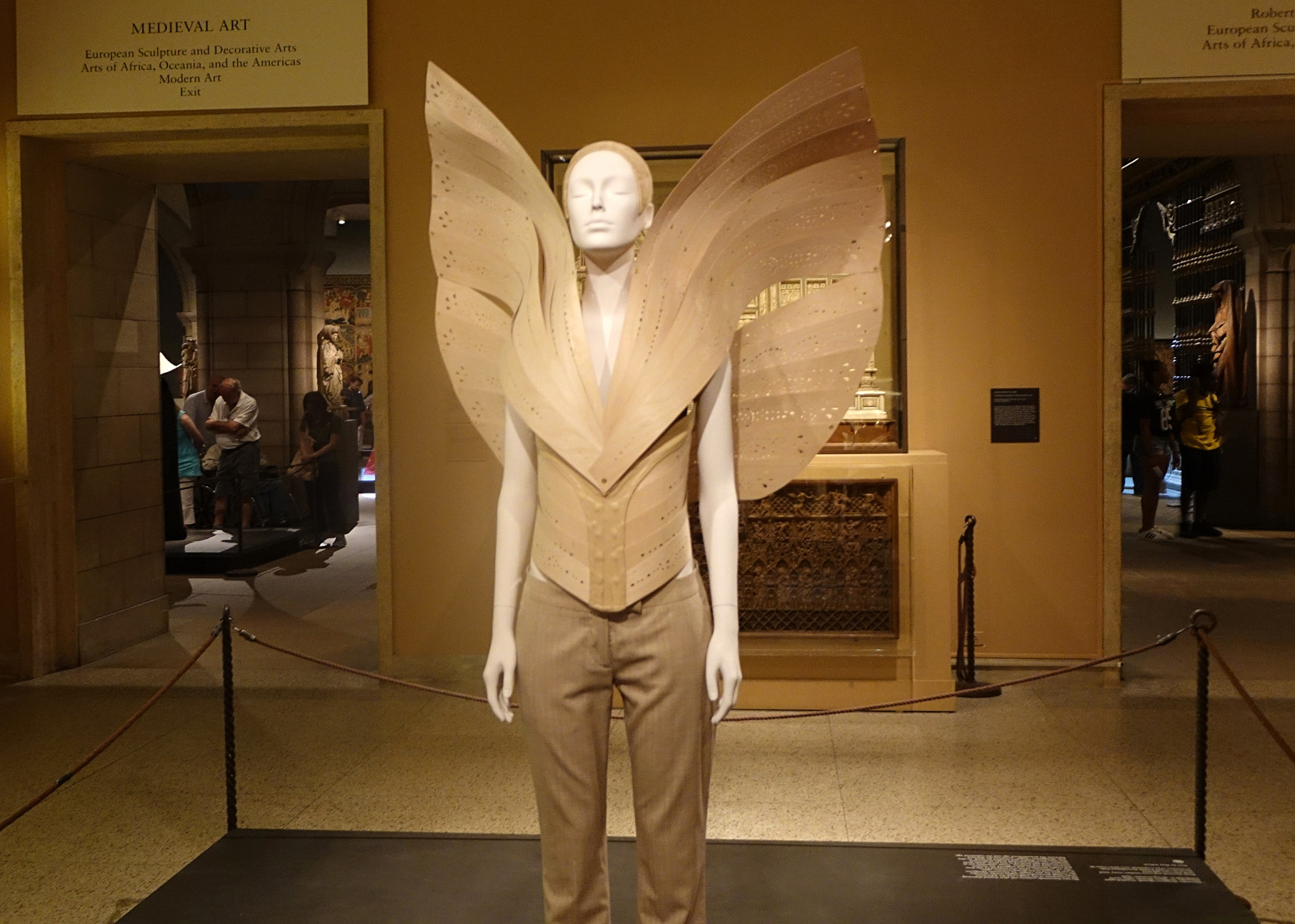
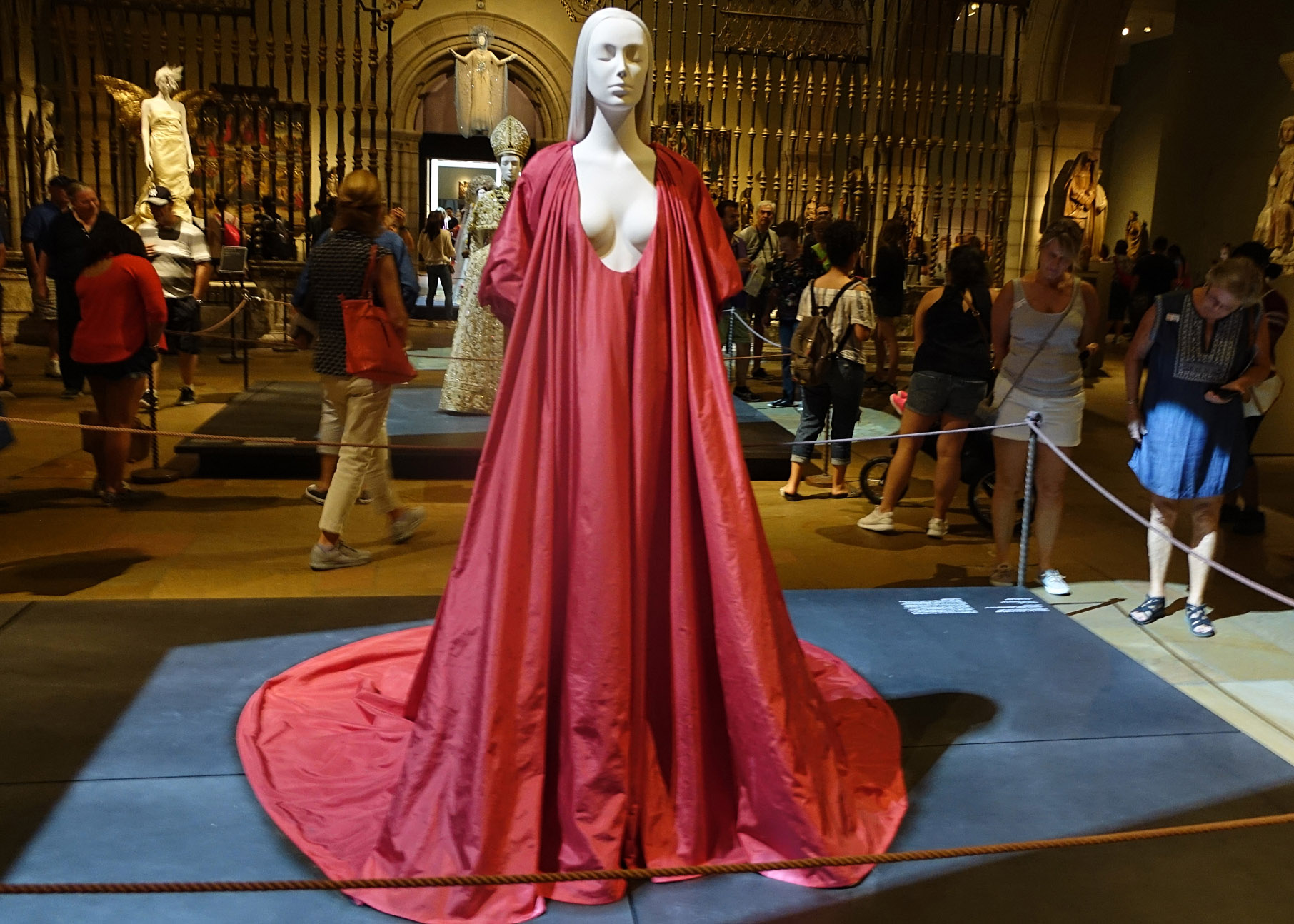

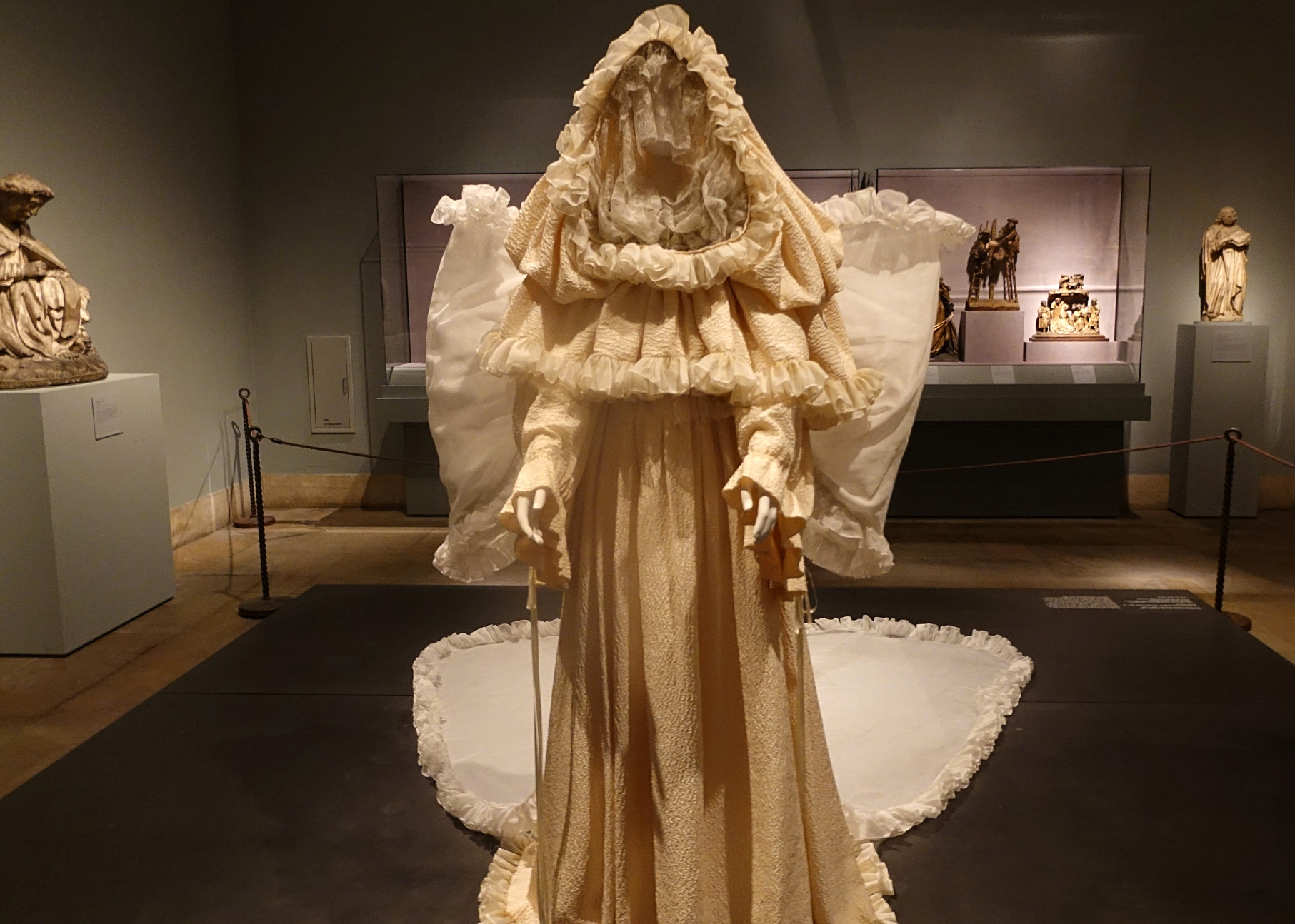

To illustrate just some of the pieces found in the exhibition, the pilgrimage begins with a choice of two separate long galleries peppered with Byzantine artworks, each of which houses religiously inspired evening dresses designed by Versace and Dolce & Gabbana respectively. Versace’s dresses expressively demonstrate their catholic influence through their coordinated display of glistening crucifixes, while D&G’s dresses are designed as enwrapping mosaics of beautiful catholic iconography. These materials are thus made spiritual, and their divinity is further emphasised by being presented on top of elevated plinths that dwarf everything and everyone else in their presence. And this is only the beginning. Upon entering the main gallery, you will be engulfed by an atmosphere of profundity in which celestial dresses and outfits stand piously in a colossal hall decorated with sublime Byzantine and medieval religious art. Whether you are looking at Alexander McQueen’s angelic winged ensemble or John Gallioni’s sparkling clerical ensemble or any other deific piece, you would be forgiven for believing that you had stumbled into the most luxurious region of the Vatican. And this is still the beginning.
Gianni Versace Evening Dresses Autumn/Winter 1997-98
Earthly Hierarchy
Throughout the exhibition, the idea of the “Catholic imagination” is conveyed most strongly by the way in which art, fashion and religion harmonise effortlessly, as if this trinity is engaged in a flawless synchronised dance. The astounding artistic merit of the fashion on display complements perfectly the majesty of the surrounding artwork, and both combine to emit a spiritual magnetism which allures all those who pass through the pearly gate.
For believers, the voyage through this titanic exhibition will most likely evoke the feeling of a religious odyssey. Yet I sense that even faithful nonbelievers will feel like Dante travelling through nine celestial spheres towards the Empyrean.
Words / Jamie Kontis
The Habit
Dolce & Gabbana Evening Dresses Autumn/Winter 2013-14



